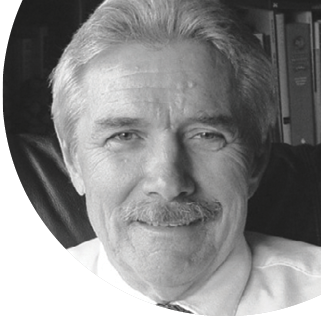Using Triggers to Avoid IAQ Problems
General Guidelines for Responding to Abnormal Conditions
Suppose you got a call from one of your techs: “We detected some carbon monoxide in the air in the Office Bay. What do you think we should do?” You ask a few questions, and you learn that the CO concentration was measured at about 5 ppm and the outdoor air ventilation rate was running around 5 cfm/person. You tell the tech you’ll get back to him.
What do these measurements mean? Is someone in danger? What is the upper acceptable limit for carbon monoxide in office spaces? And what about the fresh air ventilation rate?
FROM TYPICAL TO TRIGGER
There are few national or mandatory limits, codes, or regulations for airborne concentrations of IAQ contaminants. Certainly the PEL and TLV values are never to be exceeded, but those are primarily intended for industrial environments. Over the years, a number of IAQ-related guidelines and recommended limits have been suggested by ASHRAE, EPA, NIOSH, AIHA, OSHA, individual States, and the WHO. For carbon monoxide, WHO, NAAQS, and ASHRAE have suggested IAQ guidelines for upper limits ranging from 6 to10 ppm.
So, at what concentration of carbon monoxide should we be concerned and take action? After all, almost all chemicals can be found in ambient air at very low concentrations. Carbon monoxide is actually exhaled in human breath at concentrations of 0.5–2 ppm in non-smokers and 10–20 ppm in those who are smoking. So if the OA ventilation is very low, even the occupants of a space could be the source of small elevated levels of CO.
Over the years, I have compiled data related to “typical” conditions, “trigger” conditions, and “upper limit” conditions that have been suggested by various associations, agencies, and others. Table 1 presents some of these data as a checklist.
Table 1.
Typical and Trigger IAQ Parameters Checklist
Caution: For general guidance purposes only; do not use for design. Always obtain competent assistance. Derived from Checklist 8 in The IAQ and HVAC Workbook by D. Jeff Burton.
Tap on the graphic below to open a larger image in your browser.
The best approach to any unusual IAQ environmental condition is to restore that condition to what is “typical” of problem-free spaces, or better. Table 1 provides information for common airborne chemical contaminants like carbon monoxide, physical markers like ventilation rates and temperatures, bioaerosol markers like mold, and human markers related to general comfort and infectious disease transmission protection.
What does “trigger” mean? It suggests a range of actions, depending on the professional judgement of the OHS professional and ranging from “take note” to “investigate” to “correct.” Higher concentrations of air contaminants warrant more immediate actions, of course.
In our example, Table 1 suggests taking some action above 1–2 ppm concentrations of carbon monoxide and ventilation of less than 15 cfm/person of OA. Our 5 ppm CO measurement is definitely not typical and might suggest a malfunctioning heater, furnace, or other equipment. Maybe a truck engine is idling near the air intake and the truck exhaust is being drawn into the space. Perhaps air is leaking from a designated-smoking area into the office space. Was the measurement representative of the whole space, or was it found in just one spot? Was it taken too near someone’s exhaled breath? Was the measurement equipment working properly and calibrated? Is the OA ventilation rate too small for the environment?
POTENTIAL CAUSES
Your investigation should be able to determine the potential causes of the excursion of CO measurement above what is considered “typical.” It should also suggest steps to be taken to return to “typical conditions.” In this case, for example, simply raising the OA ventilation rate to the “typical” rate of 20 cfm/person could lower the CO concentration to the trigger levels. The equation looks like this:
Note that Table 1 is based on historical and traditional data and represents my best judgment. You can likely find other information that enhances the guidelines of Table 1. Use it with appropriate professional caution and judgment.
C2 = C1 (OA1/OA2) = 5 ppm (5 cfm / 20 cfm) = 1.3 ppm
thesynergist | TOC | NEWSWATCH | DEPARTMENTS | COMMUNITY
thesynergist | TOC | NEWSWATCH | DEPARTMENTS | COMMUNITY


